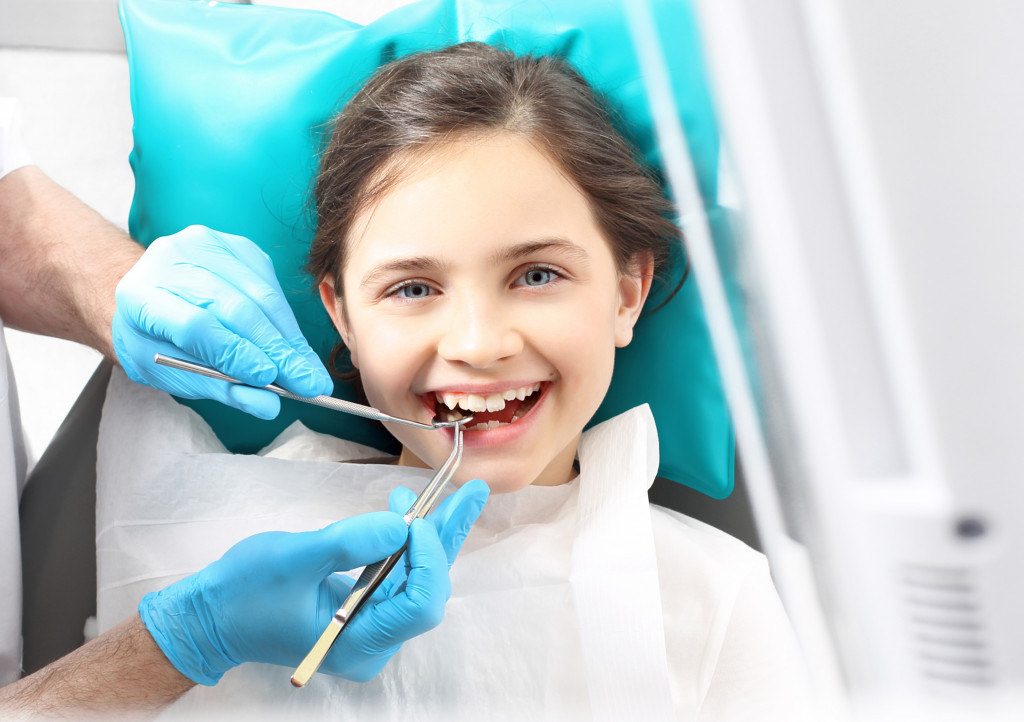- Be aware of signs and symptoms of impacted canine exposure, such as pain and discomfort, crooked teeth, difficulty eating and speaking, and bad breath.
- Understand the treatment options, such as oral surgery, to address the issue.
- Take preventative measures to reduce the risk of impacted canine exposure, including practicing good oral hygiene.
- Show emotional and practical support throughout the process.
- Follow up with regular checkups and maintenance and recommended aftercare procedures.
As a parent, you are always concerned about the health and well-being of your children. One common dental issue that kids face is impacted canine exposure. An impacted canine occurs when the canine tooth doesn’t correctly emerge from the gum line and remains trapped.
This can result in discomfort, shifting of teeth, and other oral health issues. As a parent, it’s essential to know the signs and symptoms of impacted canine exposure and what steps to take to address it.
Know the signs and symptoms
Regarding your child’s dental health, it’s essential to be aware of any issues that may arise, especially if your child is experiencing an impacted canine. An impacted canine can cause immense pain; if left untreated, it can lead to other dental issues. Here are some of the common symptoms:
Pain and Discomfort

The most common symptom of an impacted canine is pain and discomfort. Your child may complain of a constant ache or experience sharp jabs of pain in their jaw or mouth. Pain may also be accompanied by swelling and redness of the gums. It’s essential to pay attention to your child’s complaints and investigate the cause of their discomfort.
Crooked Teeth
An impacted canine can lead to crooked teeth or a misaligned bite. When a canine tooth doesn’t erupt properly, it can cause neighboring teeth to shift out of place, causing a misaligned bite. If your child’s teeth are suddenly misaligned, it could indicate an impacted canine.
Difficulty Eating and Speaking
An impacted canine can make it challenging for your child to eat or speak properly. The canine tooth plays a critical role in biting and tearing food; if it’s not functioning correctly, your child may avoid certain foods they find difficult to eat. Impacted canines may also interfere with speech, leading to a lisp or other speech difficulties.
Bad Breath
Due to the uneven positioning of an impacted canine, your child may struggle with bad breath. Food particles and bacteria can get trapped, leading to unpleasant odors in the mouth. If your child suddenly develops terrible breath, it’s worth investigating the cause so that you can identify any dental issues that require treatment.
Understand the treatment options.
The impacted canine is usually situated under the gums, which makes it difficult to emerge naturally. If left untreated, it can cause painful infections or disrupt the alignment of the other teeth. Thankfully, different treatment options can help. Oral surgery is one of the most effective ways to correct the problem.
The procedure involves an incision in the gums to expose the impacted tooth and gradually attaching a bracket and chain to guide it into position.
The recovery time is relatively quick, and patients usually experience minimal discomfort. Although treatment may seem daunting initially, it’s essential to take action early on to ensure your child’s dental health and a confident smile.
Take preventative measures

While impacted canine exposure is not always preventable, there are several measures you can take to reduce the risk. Encouraging your child to practice good oral hygiene, including regular brushing and flossing, can help prevent dental issues from developing. Additionally, early monitoring and addressing dental issues can prevent them from progressing into more severe problems.
Be supportive
Dealing with a dental issue can be scary for anyone, let alone a child. As a parent, providing your child with emotional and practical support is essential throughout the process. This may include taking time to explain the situation, answering any questions they may have, and being present during appointments. By showing that you’re there for them, you can help ease any anxiety your child may have.
Follow-up and follow-through
After any necessary treatment, following up with regular checkups and maintenance is important. This can help catch potential issues early on and ensure that your child’s oral health remains in good standing. Additionally, following any recommended aftercare or procedures can help prevent further complications.
Final Thoughts
Impacted canine exposure among kids is a common but treatable dental issue. As a parent, it’s essential to be aware of the signs and symptoms, understand the treatment options, take preventative measures, be supportive, and follow up and follow through.
By being proactive and addressing the issue early on, you can help your child achieve and maintain optimal oral health. Remember to schedule regular checkups with a dental professional, keep good oral hygiene practices, and provide your child with the support they need.



